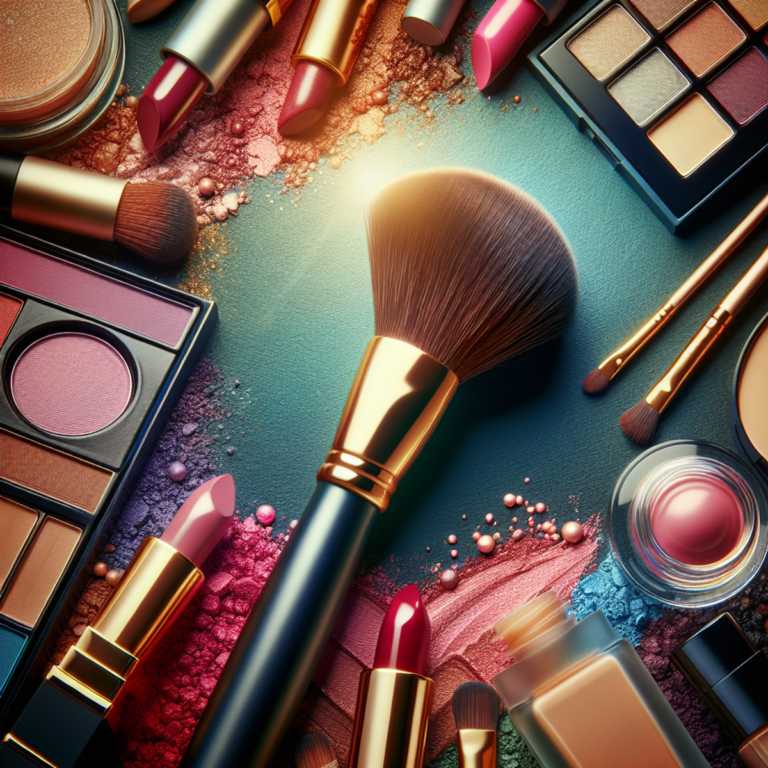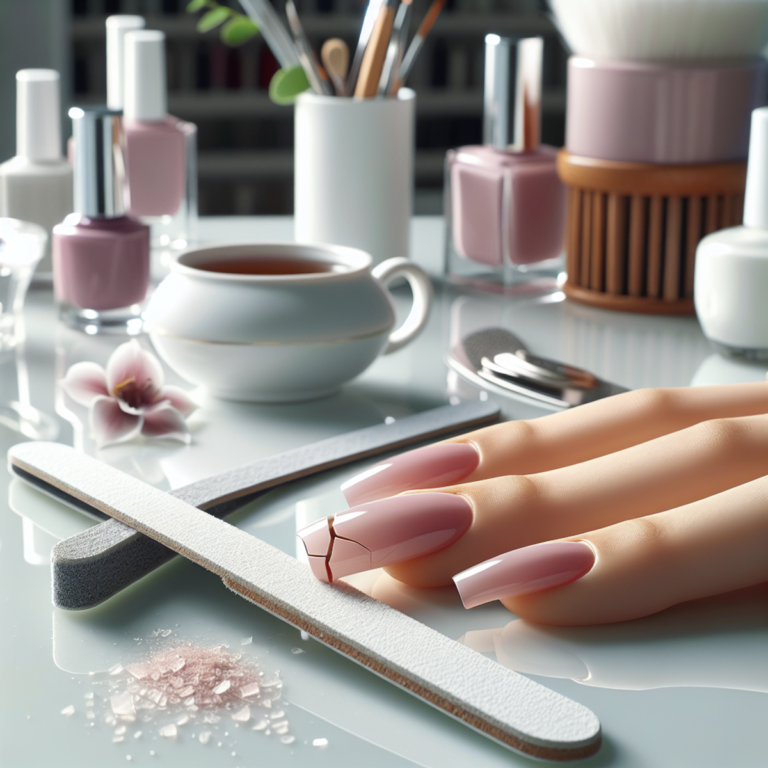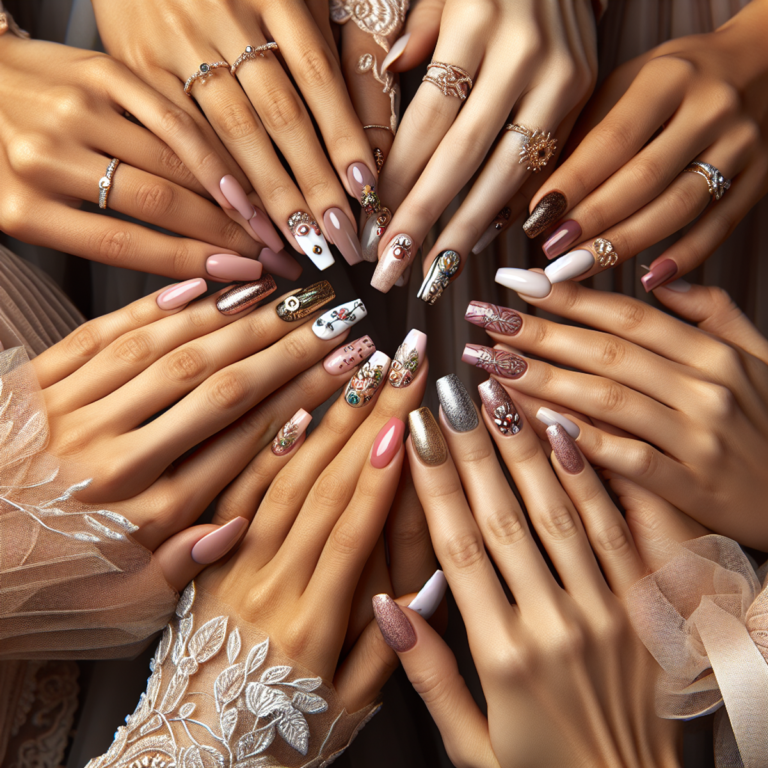What Causes Acne and How to Get Rid of It

Introduction
Acne is a common skin condition that affects people of all ages and backgrounds, impacting millions worldwide. It usually shows up on areas with lots of oil glands like the face, neck, shoulders, back, and chest. Acne can take different forms such as pimples, cysts, and blackheads. It’s not just something teenagers deal with; it can continue or even start in adulthood, affecting both physical appearance and mental well-being.
Understanding what causes acne is crucial for effective management and treatment. Many factors contribute to its development, including:
- Hormonal changes
- Genetics
- Diet
- Skincare products
- Environmental influences
- Stress
Each factor plays a unique role in clogging pores with oil, dead skin cells, and bacteria.
By identifying specific causes of acne in your situation, you can tailor treatments to address them effectively. This approach not only alleviates current symptoms but also helps prevent future outbreaks.
What Causes Acne?
Understanding the root causes of acne is crucial for effectively managing and treating this common skin condition. Two main factors often play a significant role in the development of acne: hormonal changes and genetics.
Hormonal Changes
Hormones play a major role in the development of acne. During puberty, the body experiences hormonal changes that often result in higher levels of testosterone, which is known to contribute to acne outbreaks. This hormone affects both males and females, especially during their teenage years. The increase in testosterone stimulates the sebaceous glands, causing them to produce more sebum or oil. This excess oil can block pores, creating an ideal environment for bacteria to grow and leading to inflammation that causes acne.
1. Testosterone and Puberty
The increase in testosterone levels during puberty is a significant contributor to acne outbreaks. Research shows that both boys and girls experience this hormone surge, which explains why acne is so common during teenage years.
2. Menstruation and Hormonal Fluctuations
For many women, hormonal changes aren’t limited to puberty. Menstruation brings about monthly hormonal shifts that can trigger breakouts. Some women also experience acne due to hormonal fluctuations during pregnancy or as a result of conditions like polycystic ovary syndrome (PCOS).
Genetics
Genetics play a crucial role in determining whether someone is prone to developing acne. Research supports the idea that if your parents had acne, you are more likely to experience it as well. Genetics can influence:
- Sebum Production: If your family has a history of oily skin, there’s a higher chance you’ll have overactive sebaceous glands.
- Skin Cell Shedding: Some individuals inherit a tendency for skin cells to shed rapidly, which can lead to clogged pores.
- Inflammatory Response: Your genetic makeup might affect how your skin responds to bacteria and inflammation, contributing to more severe forms of acne.
Scientific studies have established strong links between family history and the occurrence of acne. Understanding this connection can help you anticipate potential skin challenges and adopt proactive measures early on.
Recognizing these underlying causes provides insight into tailored treatment approaches that address specific triggers related to hormonal imbalances or genetic predispositions. This knowledge empowers you with strategies that go beyond surface treatments, aiming for lasting solutions rooted in understanding your body’s unique characteristics.
Other Contributing Factors to Acne Breakouts
Diet and Its Impact on Acne
The relationship between diet and acne has been a topic of interest for many researchers. Certain foods may exacerbate acne, particularly those with a high glycemic index (GI). The glycemic index measures how quickly foods cause blood sugar levels to rise. Foods with a high GI, such as white bread, sugary snacks, and certain cereals, can lead to spikes in insulin levels. This increase in insulin can result in elevated sebum production, contributing to clogged pores and acne breakouts.
Dairy products are another dietary factor often linked to acne. Some studies suggest that milk consumption, especially skim milk, is associated with an increased risk of developing acne. The hormones present in milk might influence the body’s hormone levels, potentially causing or worsening acne.
While not everyone may experience acne flare-ups due to these dietary factors, paying attention to how your skin reacts to specific foods could be beneficial. A balanced diet rich in fruits, vegetables, and whole grains might help maintain clearer skin for some individuals. However, it’s essential to recognize that certain foods can actually help alleviate acne, while others can worsen it.
Skin Care Products and Acne
The skincare and makeup products you choose play a significant role in managing acne-prone skin. Products that are heavy or oil-based can clog pores, leading to breakouts. This is where the term noncomedogenic becomes crucial — it refers to products formulated not to block pores.
When selecting skincare products:
- Look for labels that specify “noncomedogenic” or “oil-free.”
- Avoid ingredients known for clogging pores like mineral oil or lanolin.
- Consider products with salicylic acid or benzoyl peroxide if you have oily or acne-prone skin.
Makeup choices also matter. Heavy foundations and powders can contribute to pore blockage. Opting for noncomedogenic makeup ensures that your cosmetics do not exacerbate your skin issues.
Regularly cleaning your makeup tools is equally important. Dirty brushes and sponges can harbor bacteria that may lead to additional breakouts.
Understanding the impact of diet and skincare choices empowers you to make informed decisions that support healthier skin. Testing different strategies while monitoring your skin’s response can help identify what works best for minimizing acne breakouts. It’s also crucial to consider other factors like stress levels and hormonal changes which could be underlying causes of adult acne as discussed in this Harvard Health blog.
Environmental and Lifestyle Influences on Acne
Environmental Factors
Acne breakouts can be significantly influenced by environmental factors. Two major contributors are high humidity and air pollution.
High Humidity
When the air is filled with moisture, the skin tends to produce more oil. This excess sebum can mix with sweat, dirt, and dead skin cells, leading to clogged pores. Such conditions are perfect breeding grounds for acne-causing bacteria.
Air Pollution
Urban environments often have high levels of pollutants that settle on the skin throughout the day. These particles can block pores and lead to inflammation, which worsens acne breakouts. It’s crucial to cleanse your skin thoroughly after exposure to polluted environments to minimize these effects.
Stress
The link between stress and acne is well-known. Stress doesn’t directly cause acne but acts as a trigger that worsens existing conditions.
Hormonal Imbalance
Stress triggers the release of hormones such as cortisol. Elevated cortisol levels increase oil production in the skin, which can lead to clogged pores and increased susceptibility to acne flare-ups.
Effective Stress Management Techniques
- Mindfulness & Meditation: Practicing mindfulness and meditation can reduce stress levels, thus helping in controlling acne outbreaks.
- Regular Exercise: Physical activities like yoga or jogging not only help in managing stress but also improve blood circulation and promote healthy skin.
- Adequate Sleep: Ensuring sufficient rest is vital for skin health. A lack of sleep can increase stress hormones, potentially worsening acne conditions.
Understanding these environmental and lifestyle influences offers insight into what causes acne and how to get rid of it effectively. By recognizing these triggers, you can take proactive steps toward better skincare management tailored to your surroundings and lifestyle choices.
Exploring Different Forms of Acne
Understanding the different forms of acne is crucial in identifying the best treatment approach. Acne lesions can show up in different ways, each with its own features. Here’s a closer look at the most common types:
Whiteheads and Blackheads
Whiteheads
These are closed comedones that appear as small, white bumps on the skin’s surface. They form when dead skin cells, sebum, and bacteria become trapped within the pores. The pore remains closed, preventing oxidation.
Blackheads
Unlike whiteheads, blackheads are open comedones where the debris inside the pore is exposed to air and oxidizes, leading to a characteristic black or dark appearance. They are commonly found on areas with high oil production, such as the nose and chin.
Papules and Pustules
Papules
These are inflamed lesions that appear as small, red or pink bumps on the skin. Unlike whiteheads and blackheads, papules do not contain pus. They can be tender to touch due to inflammation caused by an immune response to bacteria within clogged pores.
Pustules
Similar in appearance to papules but filled with pus, pustules are characterized by a white or yellow center surrounded by red inflammation. This type of acne lesion is often what people refer to as “pimples.”
Nodules and Cysts
Nodules
These are large, painful lumps beneath the skin’s surface. Nodular acne occurs when clogged pores endure deeper inflammation. Nodules can be stubborn and often require more intensive treatment than other forms of acne.
Cysts
Considered severe, cystic acne involves large pus-filled lesions similar to boils. Cysts can be very painful and lead to significant scarring if left untreated.
Each type of acne requires a different management strategy for optimal results. Identifying the specific form you’re dealing with can guide you toward effective treatments and help prevent further breakouts. Understanding these variations also assists dermatologists in customizing care plans that address individual needs effectively.
Effective Treatments for Acne Management
Understanding the various treatment options available can significantly help manage acne effectively.
Topical Treatments
For mild to moderate acne cases, topical treatments are often the first line of defense:
- Benzoyl Peroxide: This common over-the-counter treatment works by killing bacteria on the skin and drying out existing pimples. It’s effective in reducing inflammation and preventing future breakouts.
- Salicylic Acid: Known for its ability to exfoliate the skin and unclog pores, salicylic acid is another popular choice. It helps remove dead skin cells, decrease swelling, and redness.
These treatments are generally available in different formulations, such as gels, creams, and cleansers. Consistent application is key to seeing results.
Oral Medications
When acne is severe or resistant to topical treatments, oral medications might be necessary:
- Antibiotics: These are often prescribed for their ability to reduce bacteria and inflammation. They are typically used for a limited time to avoid antibiotic resistance.
Oral medications can have side effects and should always be taken under the guidance of a healthcare professional. Both types of treatments emphasize the importance of personalized skincare regimens tailored to individual needs.
Professional Interventions for Persistent Acne Cases
When over-the-counter treatments and lifestyle changes don’t work, professional interventions can make a big difference in treating persistent acne. These advanced treatments are usually done by dermatologists or skincare experts who customize solutions for each person.
Chemical Peels
Chemical peels involve applying a chemical solution to the skin, which causes it to exfoliate and eventually peel off. This process reveals new, regenerated skin that is often smoother and less affected by acne. Chemical peels can effectively treat mild to moderate acne and improve the appearance of acne scars. The depth of the peel can vary, with options ranging from superficial to deep peels, depending on the severity of the acne and skin type.
Laser Therapy
Laser therapy is another popular method used to target stubborn acne. This treatment uses intense light pulses to reduce the bacteria responsible for acne breakouts and to decrease oil production in the skin. Laser therapy can also help reduce inflammation and promote healing, making it suitable for treating both active acne and residual scarring.
Other Professional Treatments
- Microdermabrasion: A minimally invasive procedure that involves exfoliating the skin with tiny crystals or a diamond-tipped wand. This treatment unclogs pores and removes surface layers of dead skin cells.
- Light Therapy: Uses different wavelengths of light to kill acne-causing bacteria or reduce inflammation.
- Corticosteroid Injections: For severe cystic acne, injections of corticosteroids can quickly reduce inflammation and pain.
These professional interventions offer promising results for those struggling with persistent or severe acne cases. Understanding what causes acne and how to get rid of it at this level often requires a multifaceted approach combining different treatments tailored by professionals for optimal effectiveness.
Preventive Measures Against Future Breakouts
Maintaining a consistent daily skincare routine is vital in preventing future acne breakouts. A well-thought-out regimen helps keep your skin clean and reduces the risk of clogged pores, which are often the culprits behind acne.
Key Steps in a Daily Skincare Routine:
- Cleansing: Use a gentle cleanser that suits your skin type. Cleansing twice a day—morning and night—removes dirt, oil, and makeup that can accumulate on the skin’s surface. Opt for products labeled as noncomedogenic to avoid clogging pores.
- Exfoliation: Incorporate exfoliation into your routine once or twice a week. This step helps eliminate dead skin cells that can block pores. Choose gentle exfoliants to prevent irritation.
- Moisturizing: Hydration is crucial, even for oily skin types. A lightweight, oil-free moisturizer keeps the skin balanced without adding excess oil.
- Sun Protection: Apply sunscreen daily to protect against harmful UV rays, which can exacerbate acne scars and discoloration. It’s essential to use noncomedogenic sunscreens ideal for acne-prone skin, as they won’t clog pores. For more insights on how sunscreen can help with acne, you might find this expert guide useful.
- Avoid Touching Your Face: Minimize contact with your face to prevent transferring bacteria and oils from your hands.
Following these preventive measures with dedication not only helps in managing existing acne but also plays a significant role in maintaining healthy skin over time. Remember, simplicity is key; you really only need a cleanser, a moisturizer, and a sunscreen in your skincare routine as suggested in this Quora discussion.
Making Lifestyle Adjustments to Minimize Acne Risk
Implementing lifestyle changes can significantly reduce the likelihood of developing acne. Simple adjustments in daily habits can make a noticeable difference in skin health and appearance.
Practical Tips for Lifestyle Adjustments:
- Choose Noncomedogenic Products: Opt for skincare and cosmetic products labeled as noncomedogenic. These products are formulated to minimize clogged pores, reducing the risk of breakouts.
- Maintain Hydration: Drinking adequate water helps keep your skin hydrated and may assist in flushing out toxins that contribute to acne. Aim for at least eight 8-ounce glasses per day.
- Balanced Diet: Incorporate a diet rich in fruits, vegetables, lean proteins, and whole grains. Limiting high glycemic index foods and dairy can also help some individuals manage acne more effectively.
- Regular Exercise: Engage in physical activities to enhance circulation and promote overall skin health. Remember to shower promptly after sweating to prevent pore-clogging.
- Adequate Sleep: Prioritize quality sleep each night, aiming for 7-9 hours. Adequate rest helps regulate hormones and reduces stress, both of which are linked to acne flare-ups.
- Stress Management: Develop techniques such as meditation, yoga, or deep-breathing exercises to effectively manage stress levels. Lower stress contributes to fewer hormonal imbalances that can lead to acne.
These lifestyle modifications not only support clearer skin but also promote general well-being, enhancing both physical and mental health.
Conclusion
Understanding what causes acne and how to get rid of it begins with recognizing its complex nature. Hormonal changes, genetics, diet, skincare products, environmental influences, and stress all play roles in acne development. Treatments range from topical applications like benzoyl peroxide to oral medications for severe cases.
Taking preventive measures is equally critical. A consistent skincare routine, noncomedogenic products, and lifestyle adjustments can significantly reduce breakouts. For persistent or severe acne concerns, seeking professional advice ensures tailored treatment plans that address individual needs effectively.
Prioritizing skin health through informed choices empowers you to manage acne confidently while minimizing future risks.
FAQs (Frequently Asked Questions)
What are the main causes of acne?
Acne is primarily caused by hormonal fluctuations, particularly increased testosterone levels during puberty and menstruation. Genetics also play a significant role, as studies have shown that family history can influence the severity and occurrence of acne.
How do diet and skincare products contribute to acne?
Certain foods, especially those with a high glycemic index and dairy products, may exacerbate acne. Additionally, using noncomedogenic skincare and makeup products is crucial, as some products can clog pores and lead to breakouts.
What environmental factors can worsen acne?
External elements such as high humidity and air pollution can significantly exacerbate acne breakouts. Furthermore, stress is also linked to flare-ups, making effective stress management techniques essential.
What types of acne lesions are there?
There are several types of acne lesions including whiteheads, blackheads, papules, pustules, nodules, and cysts. Each type has distinct characteristics that differentiate them from one another.
What are some effective treatments for managing acne?
Topical treatments like benzoyl peroxide and salicylic acid are popular for mild to moderate cases of acne. For severe cases, oral medications such as antibiotics may be considered to help manage outbreaks.
What preventive measures can be taken against future breakouts?
Maintaining a consistent skincare routine with gentle cleansing products is vital in preventing new breakouts. Additionally, making lifestyle adjustments such as choosing noncomedogenic products can further reduce the likelihood of developing acne.










